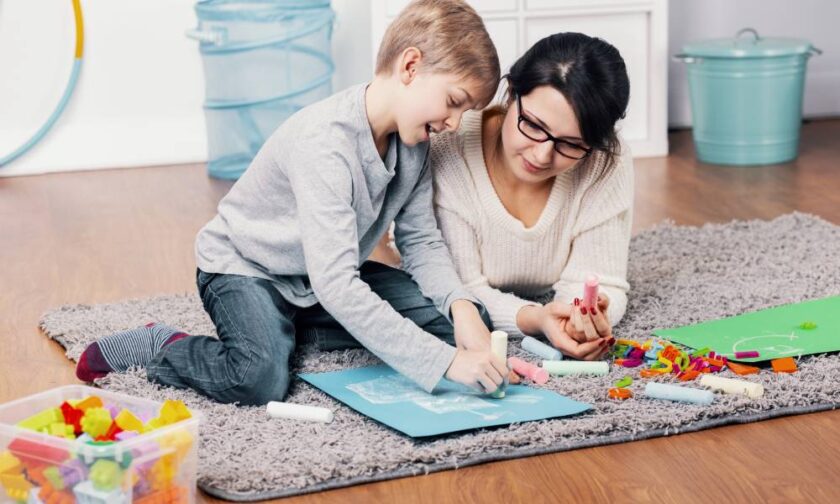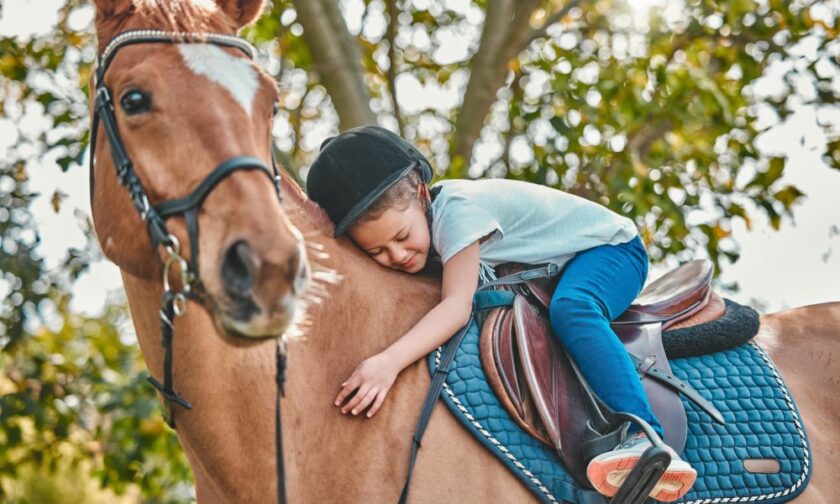Every parent wants their child to have friends they enjoy spending time with. Kids’ relationships often form based on shared play, complicating things for those with autism who lean towards solo play.
As kids get older, they progress through the four stages of play socialization: solo, parallel, associative, and cooperative. While neurotypical children hit each milestone around the same age, your kiddo with autism may need some extra support to make progress. If you’re a parent wondering how to promote play skills for kids with autism, read this helpful guide to proceeding through each stage.
Solo Play: Introduce New Toys
Solo play—in which kids engage with a toy independently—is first. Younger children on the spectrum may not engage with toys at all. Hand-flapping or sucking on their hand can be more rewarding than playing with cars or building blocks, restricting play. Even if your child does have a few favorites early on, they likely don’t branch out beyond those mainstays.
To nudge them into more diverse play, introduce toys your little one would respond well to. There are several sensory toys for kids with autism that are perfect because they provide a pleasing medium to process the world for kids who struggle to do so in an organized way. As a result, you’ll likely find slime and bubbles to be immediate hits. As long as you supervise this play, these are great tools for broadening their horizons.
Parallel Play: Let Present Interests Guide Future Activities
Next, parallel play involves solitary play that’s close to a peer who’s doing something similar. Another way to promote play skills for kids with autism is slowly transitioning your child’s play to something their siblings or neighborhood friends enjoy so that parallel play is more realistic to attain.
The best method for this is letting an existing interest fuel a different play style. If your kiddo always chooses cars and trains, try getting them Lego car and train sets if their peers like Legos. After successfully introducing this or another play variation, they’re more likely to have fun alongside others than completely tune out what they’re doing.
Associative Play: Model Turn-Taking
After parallel play comes associative play, in which kids share with one another. To instill sharing, which is a necessary skill beyond play, model what it looks like through your own behavior.
Playing a board or card game is a good way to do this. First, demonstrate how taking turns works and that doing so allows your fun game to continue. After this, include your child and model a few more turns until it’s theirs. You may need to prompt initially to walk them through, but after that, let them try. Teaching associative skills is as simple as praising when they take a turn well, though this may be a struggle. To help, start with a promising game linked to a present interest.
Cooperative Play: Promote Speech
Finally, cooperative or collaborative play involves peers working together. This may be a stretch for some, but teaching proper speech skills helps immensely.
In order to participate with other kids, a child on the spectrum needs plenty of words to communicate their ideas. To foster a solid vocabulary, have them practice asking for and describing things. The more they can articulate, the less likely they are to become frustrated during cooperative play.
A Note on Expectations
Remember, as your child navigates play, don’t force them to conform to a neurotypical standard. While socialization helps them develop relationships, delays and differences as they socialize are totally normal for someone with an autism spectrum disorder.
These practices can help, but remember to be graceful at every turn by keeping a realistic perspective about your child’s unique capabilities.






